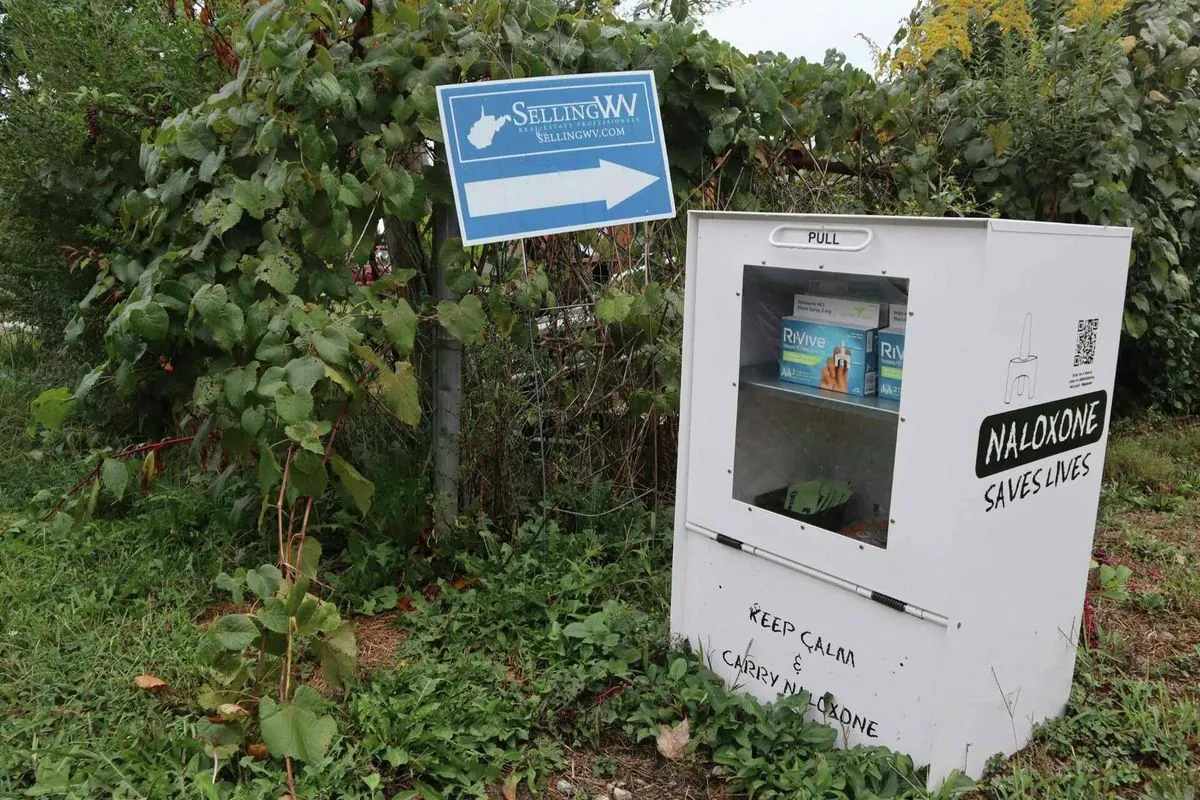In a remarkable transformation, Jeff Card's family business has shifted from manufacturing newspaper boxes to producing containers for a potentially life-saving purpose. These repurposed metal receptacles now dispense Naloxone, an opioid overdose reversal medication, free of charge across the United States.
Naloxone, commonly known as Narcan, has been proliferating in public spaces since the U.S. Food and Drug Administration approved its over-the-counter sale in March 2023. This decision marked a significant milestone in the fight against opioid-related deaths, which have plagued the nation for decades.
The distribution of Naloxone through these containers is part of a broader effort to combat the opioid crisis. The "Save a Life Day" initiative, started by a West Virginia nonprofit in 2020, has expanded to 35 states as of September 2024. This event focuses on distributing Naloxone and educating the public about its use.
Naloxone's journey from hospital use to public availability has been long. The FDA first approved its use to treat overdoses in 1971, but it remained confined to medical settings for decades. In 2015, Narcan nasal spray was approved as a prescription drug, and it wasn't until September 2023 that it became available over the counter at major pharmacies.
The accessibility of Naloxone has coincided with a decrease in opioid-related deaths. CDC estimates show a decline from 85,000 deaths in the 12 months ending April 2023 to 75,000 in the following year. While still higher than pre-pandemic levels, this reduction suggests progress in addressing the crisis.
Community efforts to distribute Naloxone and educate the public have been crucial. Caroline Wilson, a West Virginia social worker and person in recovery, emphasizes the importance of increasing access and dispelling myths about the medication. Naloxone has no effect on individuals without opioids in their system, making it safe for widespread distribution.
"To say, 'Hey, we have a 24-hour vending machine, come over here and come get what you need — no judgment,' is so bold in this Bible belt state and it's helping me break down the stigma."
Personal stories highlight the impact of these distribution efforts. In Erie, Pennsylvania, Larry Tuite, a 74-year-old artist, has been actively distributing Naloxone packages. His efforts, including the use of a Save a Life Day container, have reportedly saved at least a dozen lives.
The evolution of Naloxone distribution reflects a growing understanding of addiction as a public health issue rather than a moral failing. As Tasha Withrow, a person in recovery in West Virginia, notes, "People can just reach in and grab what they need — we didn't have that back then."
While challenges remain, including the cost of Naloxone and persistent stigma, the widespread availability of these life-saving containers represents a significant step forward in addressing the opioid crisis. As communities continue to embrace harm reduction strategies, the hope is that more lives will be saved and the path to recovery made more accessible for those struggling with addiction.
